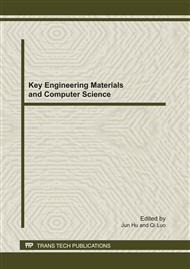[1]
Kazunari Shinagawa, Ken-ichiro Moria and Kozo Osakada, Finite element simulation of deep drawing of stainless steel sheet with deformation-induced transformation, Journal of Materials Processing Technology, Vol. 27(1991), 301-310.
DOI: 10.1016/0924-0136(91)90059-n
Google Scholar
[2]
Zafer Tekiner, An experimental study on the examination of springback of sheet metals with several thicknesses and properties in bending dies, Journal of Materials Processing Technology, Vol. 145(2004), 109-117.
DOI: 10.1016/j.jmatprotec.2003.07.005
Google Scholar
[3]
D.W. Jung, I.S. Song and D.Y. Yang, An improved method for the application of blank-holding force considering the sheet thickness in the deep-drawing simulation of planar anisotropic sheet, Journal of Materials Processing Technology, Vol. 52(1995).
DOI: 10.1016/0924-0136(94)01624-a
Google Scholar
[4]
Y. Abea, K. Moria, and O. Ebiharab, Optimisation of the distribution of wall thickness in the multistage sheet metal forming of wheel disks, Journal of Materials Processing Technology, Vol. 125-126(2002), 792-797.
DOI: 10.1016/s0924-0136(02)00394-1
Google Scholar
[5]
Y. Huanga, Z.Y. Lob and R. Dub, Minimization of the thickness variation in multi-step sheet metal stamping, Journal of Materials Processing Technology, Vol. 177(2006), 84-86.
DOI: 10.1016/j.jmatprotec.2006.03.225
Google Scholar
[6]
S.M. Mahdavian and D. He, Product thickness analysis in pure cup-drawing, Journal of Materials Processing Technology, Vol. 51(1995), 387-406.
DOI: 10.1016/0924-0136(94)01586-p
Google Scholar
[7]
G.T. Kridli, L. Bao, P.K. Mallick and Y. Tian, Investigation of thickness variation and corner filling in tube hydroforming, Journal of Materials Processing Technology, Vol. 133(2003), 287-296.
DOI: 10.1016/s0924-0136(02)01004-x
Google Scholar
[8]
Yohei Abe, Chin Joo Tan, Ken-ichiro Mori and Michiyuki Suzuki, Locally Thick Blank for Increase in Wall Thickness at Corner of Stamped High Strength Steel Products, Journal of JSTP, vol. 49, No. 573(2008), 985-989.
DOI: 10.9773/sosei.49.0985
Google Scholar
[9]
Yohei Abe, Chin Joo Tan, Ken-ichiro Mori, Takehiko Fijioka, Takayuki Nonaka and Osamu Ebihara, Increase of Wall Thickness around Corner of Multi-Stage Dawn Cup with Flange Using Conical Punches, Journal of JSTP, vol. 48, No. 561(2007), 925-929.
DOI: 10.4028/www.scientific.net/kem.340-341.761
Google Scholar
[10]
Hiroki Takano, Kimiyoshi Kitazawa, Hikaru Yamamoto and Nae Marutani, Possibility of thickening of 1050 aluminum sheet by an incremental flatting process, Journal of Japan Institute of Light Metals, Vol. 57, No. 6(2007), 234-239.
DOI: 10.2464/jilm.57.234
Google Scholar
[11]
Hiroki Takano and Kimiyoshi Kitazawa, Thickening behavior of 1050 aluminum and 5052 aluminum alloy sheets during incremental flattening, Journal of Japan Institute of Light Metals, Vol. 58, No. 10(2008), 503-508.
DOI: 10.2464/jilm.58.503
Google Scholar
[12]
Nobuhiro Koga, Masayoshi Asaka and Kunlachart Junlapen, Deep-drawing and ironing of 1050 aluminum sheets loaded with vibration using NC servo press machine, Journal of Japan Institute of Light Metals, Vol. 57, No. 6(2007), 240-244.
DOI: 10.2464/jilm.57.240
Google Scholar
[13]
Nobuhiro Koga, Masaaki Kubo and Kunlachart Junlapen, Burr-Free Shearing Using NC Servo Machine, Journal of JSTP, vol. 48, No. 558(2007), 645-649.
DOI: 10.9773/sosei.48.645
Google Scholar
[14]
K. Mori, K. Akita, Y. Abe, Springback behaviour in bending of ultra-high-strength steel sheets using CNC servo press, International Journal of Machine Tools & Manufacture, Vol. 47, No. 2(2007), 321-325.
DOI: 10.1016/j.ijmachtools.2006.03.013
Google Scholar


